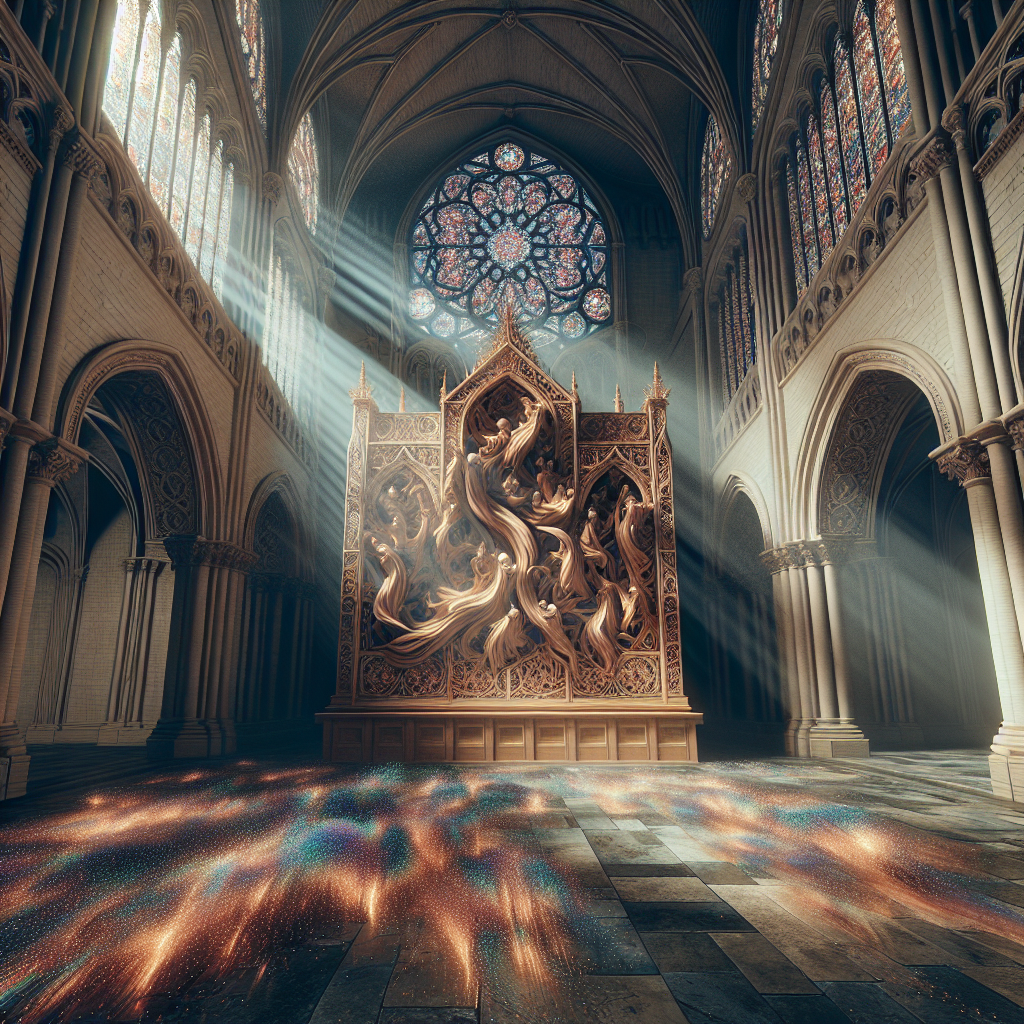Spiritual Devotional about Sacred Art
Sacred Art: A Divine Reflection
In our spiritual journey, we come across various avenues that help us to connect deeper with the Divine. One such profound way is through sacred art. The beauty and mystery of sacred art have fascinated and inspired believers for centuries. It acts as a visual gospel, expressing faith, devotion, and the unparalleled stories of the Bible.
Biblical Principles in Sacred Art
Sacred art isn’t just a presentation of aesthetically pleasing visuals; it’s a narrative of divine wisdom, biblical truths, and God’s love for humanity. From the intricate stained glass windows portraying Jesus’ life to the iconography of saints, these pieces beautifully echo biblical principles.
Exodus 31:1-5: The LORD said to Moses, “See, I have called by name Bezalel the son of Uri, son of Hur, of the tribe of Judah, and I have filled him with the Spirit of God, with ability and intelligence, with knowledge and all craftsmanship, to devise artistic designs, to work in gold, silver, and bronze, in cutting stones for setting, and in carving wood, to work in every craft.”
Art is no stranger to the Bible. In the verses above, you can see how art was used to glorify God, with Bezalel filled with God’s spirit to create divine masterpieces. The sacred art helps us visually grasp God’s word and make us appreciate His grandeur and omnipresence.
The Impact of Sacred Art
Sacred art not only educates us about the faith and the Scriptures but also evokes a certain awe and reverence for the Divine. It helps us see past our human limitations and touch the very heart of God’s divinity. Moreover, it beckons us to pause, ponder, and pray, providing a unique path for us to seek a spiritual connection with God.
A Call to Appreciate Sacred Art
As we appreciate each stroke, colour, and figure in sacred art, let us allow our hearts to resonate with God’s love and mercy, and His message encapsulated within these works. Let’s use this beautiful medium to deepen our faith, enhance our understanding, and inspire our journey towards spiritual growth.
As Apostle Paul said, “Finally, brethren, whatsoever things are true, whatsoever things are honest, whatsoever things are just, whatsoever things are pure, whatsoever things are lovely, whatsoever things are of good report; if there be any virtue, and if there be any praise, think on these things” (Philippians 4:8).
Indeed, sacred art is one of those ‘lovely’ and ‘praiseworthy’ things that reflect God’s glorious grandeur and infinite love for us.
Explore and dig up answers yourself with our BGodInspired Bible Tools! Be careful – each interaction is like a new treasure hunt… you can get lost for hours 🙂
Q&A about Sacred Art
Q: What is Sacred Art?
A: Sacred art refers to the artistic creations or visual expressions inspired by or connected to the religious or sacred beliefs. These can include paintings, sculptures, mosaics, stained glass, and more, predominantly found in temples, churches, mosques, and other religious institutions.
Q: What is the purpose of Sacred Art?
A: The purpose of Sacred Art is to inspire individuals towards spiritual awareness, reverence, and a deeper understanding of their faith. It often serves to convey religious stories, doctrines, or spiritual concepts.
Q: Can you give some examples of Sacred Art?
A: Yes, examples of Sacred Art include the Sistine Chapel ceiling painted by Michelangelo, the Islamic calligraphy in the Blue Mosque in Istanbul, the Buddha statues of the Bamiyan Valley in Afghanistan, and the stained glass windows in the Notre-Dame Cathedral in Paris.
Q: What religions use Sacred Art?
A: Almost all religions use some form of Sacred Art. This includes Christianity, Islam, Hinduism, Buddhism, Sikhism, Judaism, and many indigenous and tribal religions around the world.
Q: Does Sacred Art differ from secular art?
A: Yes, while secular art focuses on aesthetic appeal, personal expression or societal commentary, Sacred Art primarily aims at depicting religious narratives, symbols, and rituals to evoke spiritual feelings, devotion, and contemplation.
Q: Is there any controversy related to Sacred Art?
A: Yes, there have been controversies related to Sacred Art, mainly regarding the depiction of divine figures, the interpretation of religious content, or issues of cultural sensitivity and appropriation.
Q: How has Sacred Art evolved over time?
A: Sacred Art has evolved with changing religious thoughts, artistic styles, and cultural influences. For example, Christian art moved from Byzantine mosaics to Renaissance paintings, while Islamic art evolved distinct regional styles. Today’s Sacred Art also incorporates modern images and forms.
Q: Can Sacred Art be used for educational purposes?
A: Absolutely, Sacred Art is a valuable resource for understanding a religion’s history, beliefs, rituals, and the culture of its followers. It offers visual representations of religious texts and teachings that can augment traditional learning methods.


